CMMC Practice SI.L1-3.14.2 – Malicious Code Protection: Provide protection from malicious code at appropriate locations within organizational information systems.
Links to Publicly Available Resources
AMTSO is the Anti-Malware Testing Standards Organization, a community of over 60 security and testing companies from around the world. This link from Microsoft identifies reputable security companies that provide consumer security software that is compatible with Windows. This document provides assessment guidance for Level 1 of the Cybersecurity Maturity Model Certification (CMMC). This Ransomware Guide includes ransomware prevention best practices and a ransomware response checklist. NIST resource that defines the requirements for malicious code protection. This NIST Special Publication provides recommendations for improving an organization’s malware incident prevention measures. This sample policy from Norfolk State University is an example of how to establish a policy and procedure for protection from malicious code. This guide from Salisbury University is designed to inform users of the risks and symptoms of malware infection on PCs, as well as prevention and removal methods. This sample policy from Sam Houston State University is an example of a policy to reduce risk by protecting against malware. This SANS whitepaper discusses several common practices which, when implemented together, will greatly decrease, and perhaps almost stop malware. This SANS whitepaper discusses how ransomware works and dissects its life cycle into multiple stages. The official Ubuntu website provides open source and proprietary antivirus options that support Ubuntu and other flavors of Linux. This sample policy from The University of Mary Washington is an example of a standard to promote a secure computing environment. This YouTube video discusses malware in the context of information security.
Discussion [NIST SP 800-171 R2]
Designated locations include system entry and exit points which may include firewalls, remote access servers, workstations, electronic mail servers, web servers, proxy servers, notebook computers, and mobile devices. Malicious code includes viruses, worms, Trojan horses, and spyware. Malicious code can be encoded in various formats (e.g., UUENCODE, Unicode), contained within compressed or hidden files, or hidden in files using techniques such as steganography. Malicious code can be inserted into systems in a variety of ways including web accesses, electronic mail, electronic mail attachments, and portable storage devices. Malicious code insertions occur through the exploitation of system vulnerabilities.
Malicious code protection mechanisms include anti-virus signature definitions and reputation-based technologies. A variety of technologies and methods exist to limit or eliminate the effects of malicious code. Pervasive configuration management and comprehensive software integrity controls may be effective in preventing execution of unauthorized code. In addition to commercial off-the-shelf software, malicious code may also be present in custom-built software. This could include logic bombs, back doors, and other types of cyber-attacks that could affect organizational missions/business functions. Traditional malicious code protection mechanisms cannot always detect such code. In these situations, organizations rely instead on other safeguards including secure coding practices, configuration management and control, trusted procurement processes, and monitoring practices to help ensure that software does not perform functions other than the functions intended. NIST SP 800-83 provides guidance on malware incident prevention.
Further Discussion
Malicious code purposely performs unauthorized activity that undermines the security of an information system. A designated location may be a network device such as a firewall or an end user’s computer.
Malicious code, which can be delivered by a range of means (e.g., email, removable media, or websites), includes the following:
- Virus – program designed to damage, steal information, change data, send email, show messages, or any combination of these things;
- Spyware – program designed to gather information about a person’s activity in secret, usually installed without the person knowing when they click on a link;
- Trojan Horse – type of malware made to look like legitimate software and used by cyber criminals to get access to a company’s systems; and
- Ransomware – type of malware that threatens to publish the contractor’s data or perpetually block access to it unless a ransom is paid.
Use anti-malware tools to stop or lessen the impact of malicious code.
